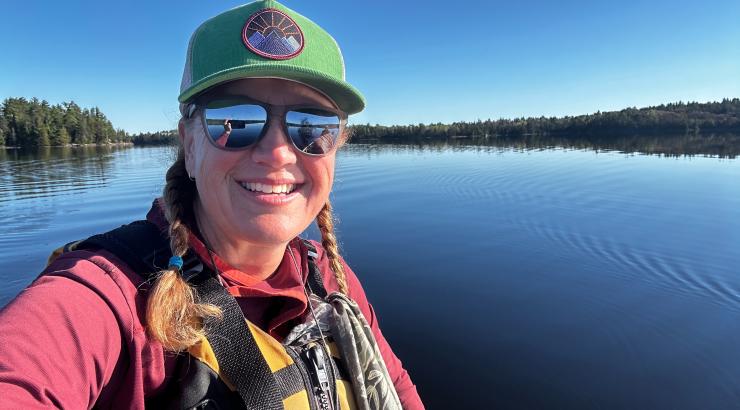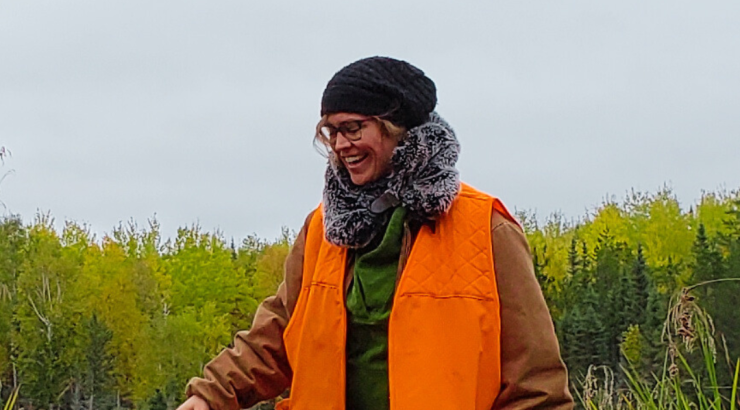
Alex Falconer has completed the first known attempt to run “The Boundary Waters Traverse!” On May 22, 2021 Alex ran over 110 miles in 38 hrs 15 mins and 3 seconds, through the heart of the Boundary Waters Canoe Area Wilderness (BWCAW) to connect the Border Route (BRT) and Kekekabic (Kek) Trail!
The Running for the Boundary Waters project is designed to highlight the issue of potential sulfide-ore copper mining proposals in the watershed of, and directly adjacent to the Boundary Waters Canoe Area Wilderness to the running community. Trail runners who are also environmental advocates are using their running as a public awareness tool for issues they care about.

The run was broken into 7 segments where Alex was assisted by trail runners, his family, podcasters, supporters and coworkers. Many helped supply multiple aid stations along the way with food, water and additional care.
-
Border Route Trailhead East to McFarland Lake - 12 miles
-
McFarland Lake to Clearwater Lake - 19 miles - WTIP Boundary Waters Podcast! Listen here!
-
Clearwater Lake to Rose Lake - 14 miles - met by Campaign staff Ingrid Lyons and Megan Wind
-
Rose Lake to Loon Lake Road - 16 miles
-
Loon Lake Rd to the BRT West Trail head on the Gunflint Trail - 10 miles - pancake aid station
-
Kekekabic Trailhead East (which is about a quarter mile south of the BRT Trailhead on the Gunflint) to Kekekabic Lake - 20 miles - met by Levi Lexvold from our Campaign and Tim Barton from Piragis Northwoods Co
-
Kekekabic Lake to Kek/Snowbank Trailhead about another 20 miles to the finish!
From Alex:
I was joined on the run by Clare Gallagher, Western States Endurance Run and Leadville winner and dedicated environmental activist; Kyle Pietari one of America’s top ultra distance trail runners and part of our pro-bono legal team; Peyton Thomas another Patagonia sponsored trail runner and Ph.D student out of North Carolina; Grand Marais Mayor Jay Arrowsmith DeCoux; Matt Wardhaugh who manages the Minneapolis and St. Paul Running Store locations; and Patagonia sent out a photographer, Brendan Davis, to capture pictures and help with the storytelling of the run.

The logistics for putting this run together were off the charts. 110 miles is no joke, particularly with 90 of the miles within the Boundary Waters Wilderness and not accessible by car. Thankfully we have such experienced staff on this campaign who could easily get into the Wilderness, set up camp and meet us along the way. A huge thank you to Ingrid, Megan and Levi from our staff for getting up and helping me. They provided food, fresh socks and some emotional support and encouragement!
The Boundary Waters Traverse went off about as well as it could, with some good ol’ Minnesota weather thrown into the mix. Saturday started out low 80’s and very humid and ended around 43 degrees and a thunderstorm! Jay started out early and we got some wonderful sunrise views over the Superior National Forest. Peyton was along for the hottest and coldest parts of the run. The middle part of the Border Route was Clare and Brendan’s tour of duty that started out hot and ended with the middle of the night storm. Kyle and Matt both ran the full Kek with me for a thankfully cool and dry Sunday.
Surprisingly, we didn’t see much for wildlife itself - previous runs I’ve seen moose, bears, river otters, deer and giant snapping turtles. Perhaps we were too loud as we crashed through the woods! We did see some grouse, eagles and a lot of ticks - a sure sign of early summer in Minnesota.
The thrill of running through the Boundary Waters is being able to cover so much distance in a relatively short amount of time and experiencing the varied terrain in one journey. And - doing it all by foot brings a certain amount of intimacy and appreciation for the land. You literally have to deal with what the trail throws at you with no way out but to keep going forward. Nothing about these trails are easy - it’s a constant grind of up and down for a total of around 18,000 feet in overall elevation gain. And if you’re lucky enough to be in a flat area, it’s probably full of mud or downed trees to hop over or duck under or a beaver dam to cross! But experiencing the Wilderness is worth the journey. Within a one mile stretch for example we stood at the top of palisades 500 feet above the forest canopy below while looking out over the border lakes into Canada with eagles soaring at eye level and then dropped down into a valley walking over beaver dams.
Crossing so many rivers and streams that connect the lakes also really drives home the interconnectedness of the water in this landscape. The Boundary Waters is the top of the watershed - the water all comes from rain or snow melt and runs out from there. It’s the very point source for waters that feed into streams that feed into all the rivers and lakes in the area. And it’s this water that is at risk from potential sulfide-ore copper mines. During the run we can refill our water straight from the source - many times without filtering as long as it’s a good deep cool lake and away from beaver dams. Where else can we travel for 100+ miles without the need to carry all the water for the entire journey.
This water and the ecosystem that depends on it needs to be protected now for all generations to come. A massive sulfide-ore copper mining district would put this water at risk and we cannot let that happen.

I finished the run in 38 hours, 15 minutes and 3 seconds with only 1 quick 10 minute nap at the parking lot between the BRT and the Kek. Most of the runners had never been to the Boundary Waters and I wanted to give them the “real” experience in addition to running 30 or more miles through it with me! After a recovery day, we headed on a canoe trip into the Boundary Waters, set up camp on an island site with a great rocky point sticking out where the wind would blow the bugs away. We relaxed at camp, hiked around and explored the island, swam in the cool waters, at breakfasts and dinners cooked over the campfire and went to sleep listening to the loons calling throughout the night. The quiet stillness of the place as the perfect medicine for recovering from the physical and mental challenges of completing the Traverse. It is impossible to leave the Wilderness without it making an imprint on our hearts. Comments from the runners of the “endless sky,” the “calm clear water,” the “loons singing out” all point to how this place has touched them.

Once the Boundary Waters is felt in a very real, specific way, a person is changed automatically into an advocate. I’m excited we’ll all get to meet up again soon - when Congress once again opens its doors to in person meetings we’ll hit the halls of Congress in support of Rep. McCollum’s bill H.R. 2794 - the Boundary Waters Wilderness Protection and Pollution Prevention Act. Her bill would permanently protect this place forever from sulfide-ore copper mining.
You can help too, please use the form in our take action tab to send a message to your Congressperson to support Rep. McCollum’s bill. We need people from across the country to step up, make your voice heard, and demand the Boundary Waters be saved and protected for all generations to come.



